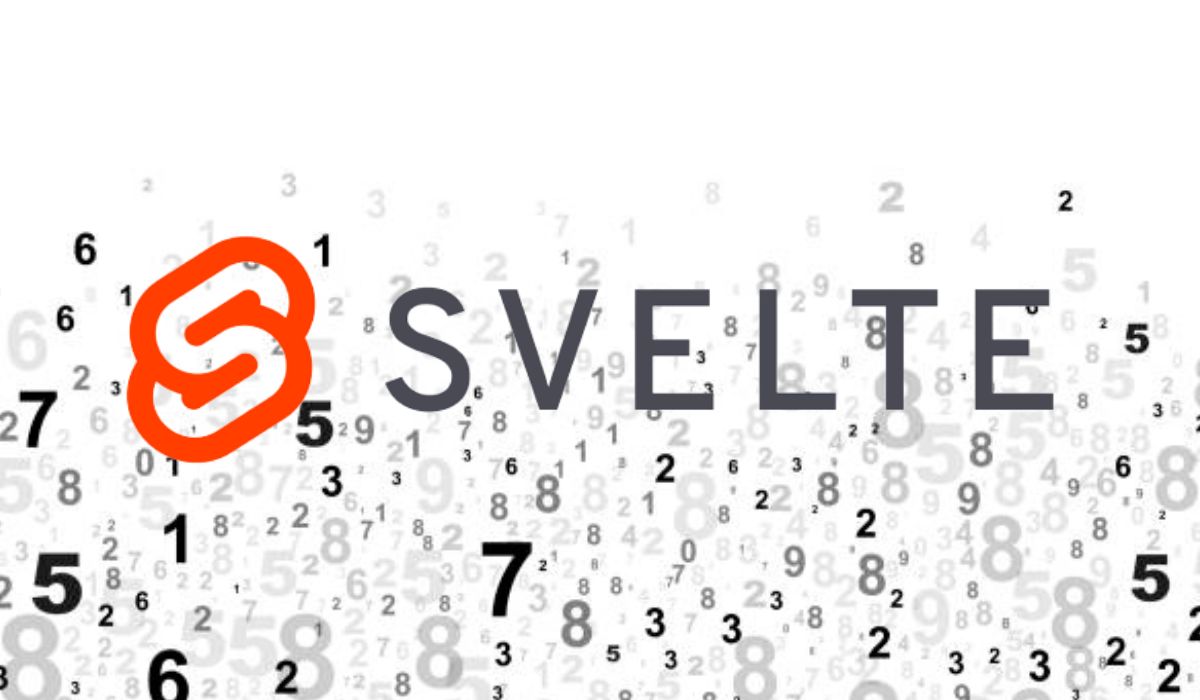New frameworks and libraries are constantly being released to simplify the construction of complex yet user-friendly online applications. Svelte is a new approach to front-end development that is gaining popularity among programmers.
Understanding the Basics
Svelte is a free and open-source JavaScript framework for creating responsive and visually appealing user interfaces. Svelte’s components are compiled into highly optimized imperative code that directly manipulates the DOM, unlike standard user-side frameworks.
Svelte is an attractive option for cutting-edge web development projects due to its novel methodology, which enables improved performance and a simpler development experience.
Svelte vs. Other Frontend Frameworks
One major distinction between Sveltes and other popular frontend frameworks like React and Angular is that Sveltes does not use a virtual DOM. Svelte immediately applies changes during compilation, which results in shorter load times and a more efficient application, while both React and Angular use a virtual DOM to maintain and update the actual DOM.
Key Features of Svelte
Svelte has a number of notable qualities:
- Easy to Learn: Svelte’s syntax is straightforward and simple to learn, making it suitable for programmers of all skill levels.
- Reactivity: Data binding is made more easier with Svelte’s reactive variables and statements, leading to a more consistent and enjoyable experience for the user.
- Scoped Styles: Styles defined within a component are localized to only that component, preventing unnecessary duplication of effort and fostering modularity.
- Build Optimization: Sveltes generates highly optimized bundles and removes unused code throughout the construction process to improve overall efficiency.
Getting Started with Svelte
Here are the basic steps to getting started with Svelte:
- Get npm (the Node Package Manager) and Node.js set up on your computer.
- Start a brand-new Sveltes project from the command line.
- Get started making components and use Svelte’s reactivity to create an engaging user interface.
Creating Components in Svelte
Each Svelte component should have its own logic, styles, and markup, which is why Sveltes advocates a component-based architecture. This method improves the reusability and maintainability of the code, two crucial features for effective frontend development.
Sveltes and SEO
Svelte’s enhanced loading speed and server-side rendering capabilities are key features for search engine optimization. Pre-rendering and delivering components to the browser immediately helps with search engine indexing and exposure.
Optimizing Performance with Svelte
Smaller bundles and quicker load times are the results of Svelte’s compilation-based methodology. Application performance is greatly improved by Svelte’s generation of extremely efficient code during compilation, leading to a more satisfying overall experience.
Svelte’s Ecosystem
The development tools and libraries available for Sveltes are expanding rapidly. SvelteKit, for creating complete apps, and Rollup, for combining many Svelte projects, are two of the most well-liked extensions.
Case Studies: Successful Sveltes Implementations
Sveltes has been used by a number of notable enterprises due to the benefits it provides in terms of performance and developer experience. Svelte’s practical efficacy has been proven by its incorporation into production-ready applications by companies like Spotify and The New York Times.
Challenges and Limitations
Svelte has numerous benefits, but it also has some drawbacks that you should be aware of. For example, it has a smaller community than other frameworks. Furthermore, developers coming from other frameworks may need some time to adjust to Svelte’s unconventional methodology.
Future of Svelte
Since the web development scene is always changing, Sveltes is primed for expansion and widespread use. It’s a serious competitor for the future of web development thanks to its focus on performance and developer-friendly features.
Conclusion
Svelte’s novel methodology and performance gains create a compelling future for web development, posing a serious threat to established frameworks. It’s an attractive option for programmers who want to create powerful and interesting web apps due to its simplicity, responsiveness, and optimized output.
FAQs
Is Svelte suitable for large-scale applications?
With its compilation-based approach, Sveltes is often more efficient for big projects, so the answer is yes when it comes to large-scale applications.
Can I use Sveltes with other frontend frameworks?
Svelte’s unique compilation method means that while it can be used in conjunction with other frameworks, it is more commonly utilized on its own.
Is it challenging for newcomers to pick up Sveltes?
Because of its simple concepts and natural syntax, Svelte is accessible to novices and may be used productively right away.
For what sorts of jobs would you recommend Svelte?
Single-page applications, progressive web apps, and user interfaces are just some of the many types of projects that benefit from Svelte’s flexibility.
Does Svelte have any prominent production users?
Svelte has been adopted by several important organizations, including Spotify, The New York Times, and Square, demonstrating its usefulness in the real world.











